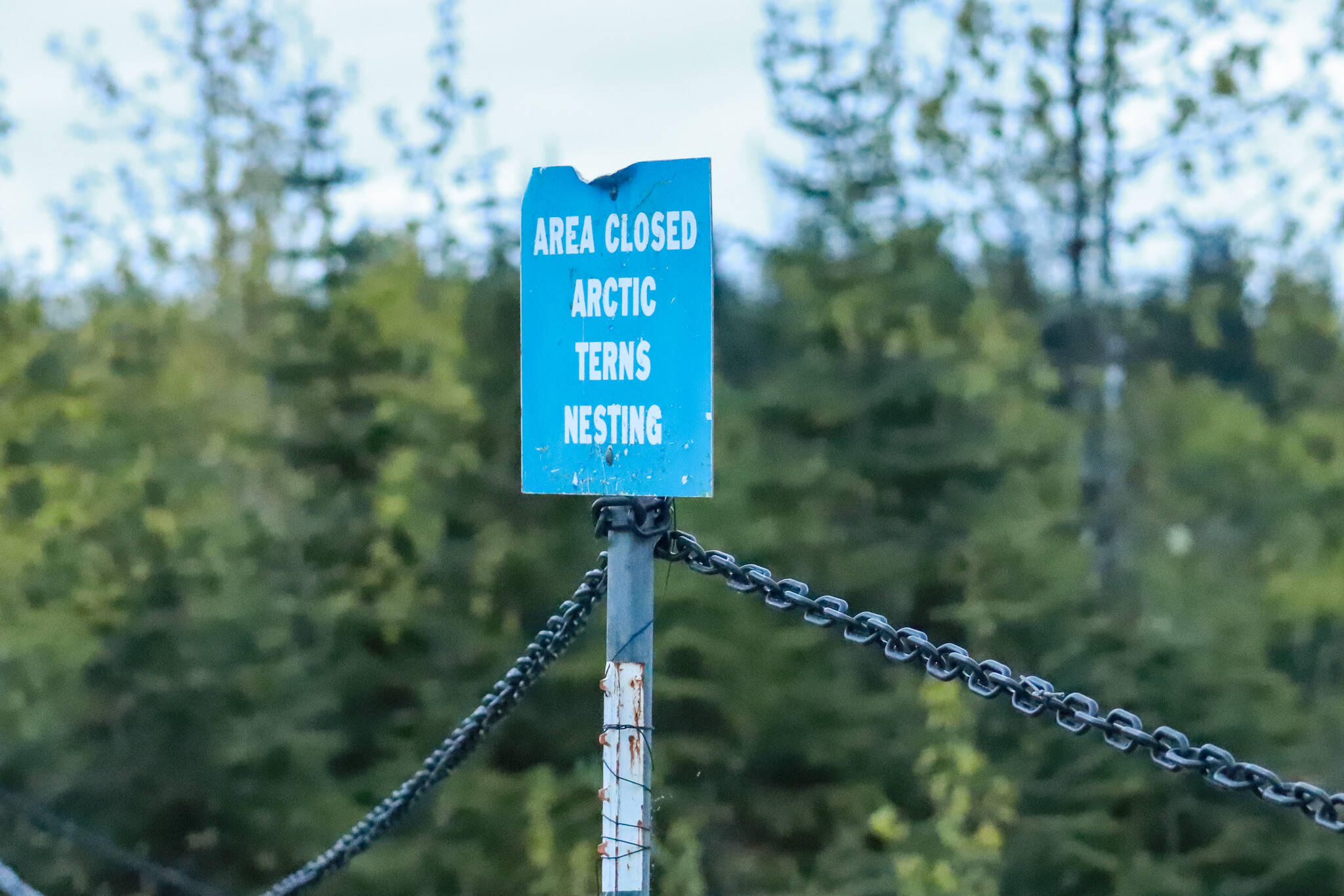Arctic terns came back to Juneau in late April to nest at the Mendenhall Glacier Recreation Area. Gwen Baluss, a wildlife technician with the U.S. Forest Service, ensures their safety. She said signs and barriers past Photo Point and toward Nugget Falls have been successful this year. The Arctic terns have been nesting at the glacier for decades.
“Compliance has been really surprisingly good,” she said. “A long time ago, I was sort of doubtful that they were that effective. But actually, people tend to follow the rules out here. If you just have a sign, people walk right by them. But if there’s a physical barrier, that seems to work really well.”
The birds began laying eggs this month. The gray or brown hatchlings will grow throughout June and fly in July. The young will remain with their parents for up to two months after their first flight.
Cameras monitor trespassing into the enclosed area. Baluss said that locals and tourists are usually respectful. But the chains can’t stop kayakers and canoers, and even though the signs are visible from the water, sometimes people don’t realize they’re too close.
“The birds will let you know if you’re too close,” she said. “I’ll see the birds go out and they’ll start bombing people. We’ve had really nice pieces of ice near the point and sometimes people will stop, and they’ll take pictures of the ice and the birds. They’re not going to smash an egg or chick because they’re not walking around. But it’s a stressor. If they’re chasing a kayak, they’re not defending their nest against a raven.”
Ravens are the biggest predators of Arctic terns. Baluss said if people want to help care for the terns, they shouldn’t feed ravens at the glacier because it attracts them toward their nests.
Migration begins in August. The terns travel from Arctic breeding grounds to Antarctica, taking advantage of summer year-round. After they leave Juneau, the slender gray-and-white birds live at sea, resting on ice. Arctic terns are “famous as a long-distance champion.” Their round-trip is around 25,000 miles and is the longest migration of any bird.
Breeding birds have a full black cap, short red legs and a red bill. This summer, they can be seen from a respectful distance at the glacier foraging by Mendenhall Lake and nesting in colonies.
• Contact Jasz Garrett at jasz.garrett@juneauempire.com or (907) 723-9356.

